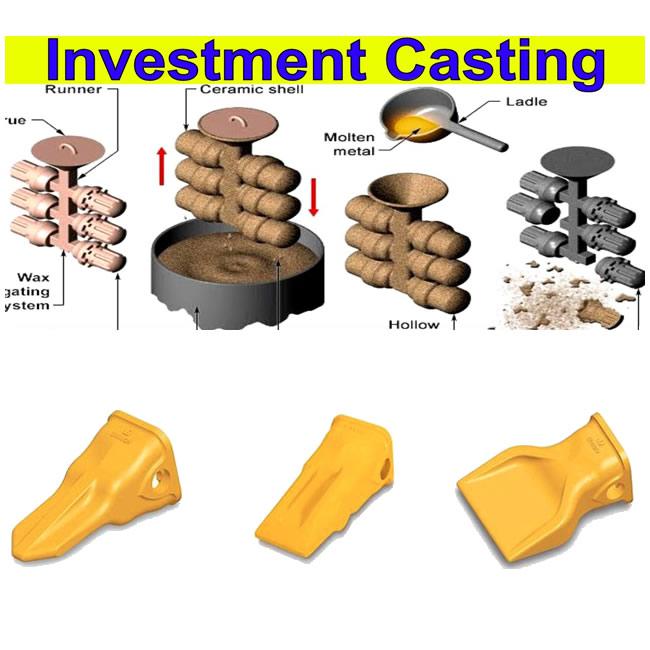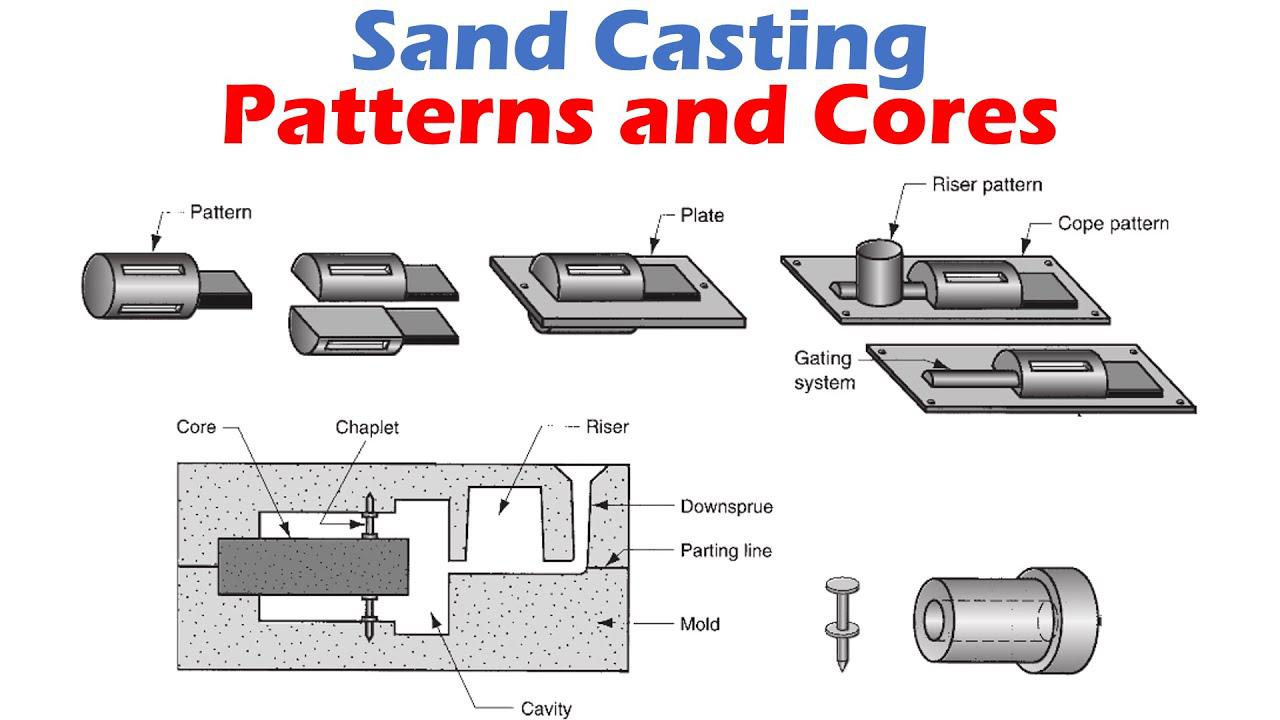Investment Casting Vs. Sand Casting

Two of the most used methods of casting are precision or investment casting and sand casting.
These techniques have evolved and show many differences when applied in various industries to produce metal components.
Sand casting and investment casting are used to make metal parts in various industries.
The two casting methods use almost a similar principle: pouring molten metal into molds and leaving it to cool.
However, investment casting and sand casting are remarkably different in many ways.
This article compares investment casting and sand casting and outlines the differences between the two oldest casting techniques.
Contents
What Is Investment Casting?
Investment casting, also known as lost wax casting or precision casting, is the oldest casting technique used to make metal components.
The process involves using molten metal and molds with the desired shape of the final product.
The entire investment casting process can be summarized as follows:
- Making metal molds filled with wax.
- Using wax to make a replica of the desired part
- Creating a gelatin mold. This is a 3D model of the final piece
Investment casting often involves using hot wax to make various tree patterns.
Sprues and wax runners are preferred, and this can be used to produce more than one part.
The patterns make a tree, absorbed in a ceramic slurry that makes it hard enough once it cools and dries.
Once dry, the tree and wax patterns are passed through immense temperatures to melt off the wax.
When the wax and sprues melt, they create hollow tubes that guide the flow of the molten metal into the mold.
The metal is poured into the mold and left to cool and solidify.
Video Link:
After solidification, the mold is destroyed to remove the final product.
Machining and post processes can be used at this stage, depending on the product being manufactured.
However, investment casting often makes more complex and refined metal parts that do not necessarily require additional machining.
What Is Sand Casting?
Sand casting is another method used to produce metal parts.

Unlike investment casting, the molds used in sand casting are made using sand.
The mold is often made by compacting sand, typically a mixture of water and clay, as a bonding agent.
The mold is made to resemble the shape and size of the desired part. Molten metal is poured into a two-piece mold.
The mold is then split to create two patterns that are attached to make a hollow filled with molten metal.
The metal is cooled to solidify before the mold is opened to remove the final product.
In sand casting, you can make many parts of the same metal component.
Also, you can make different parts in a single mold.
The difference between investment casting and sand casting processes is that the mold is destroyed in sand casting.
However, the sand used can be reused in creating other molds.
Video Link:
What Are The Differences Between Investment Casting And Sand Casting?
As mentioned earlier, investment casting and sand casting are similar in a way that they are both used to produce metal parts. However, they are typically different in many ways.
The main differences between investment casting and sand casting lie in the processes.
Other notable dissimilarities can be seen in their advantages and disadvantages.
Investment casting is typically expensive for a start because the entire casting process requires many tools and preparations.
However, investment casting is ideal because it produces complex metal parts with an excellent surface finish than sand casting.
Additionally, investment casting is mainly used to make more complex metal parts like aircraft engine parts, dental braces, and firearm parts.
This method can be used to produced hundreds of smaller parts using a single tree.
However, investment casting cannot be used to make metal parts of larger sizes and weight.
The maximum weight is often a fraction of an ounce.
However, the weight and size can be increased, depending on the mold-handling equipment used.
Sand casting uses san-based molds that are split to remove the product.
This means that some parts of the mold are attached to the product, which also shows lines resulting from the split mold.
Therefore, sand casting often requires post processes to refine the surface finish.
This can increase the overall cost.
Additionally, the final surface finish is never as sleek as investment casting.
On the other hand, investment casting uses hardened ceramic molds.
The final product often possesses an excellent surface finish that does not require additional post processes.
Additionally, the liquid ceramic slurry used ensures a more refined and complex design.
In contrast, the compacted sand used in sand casting tends to have a rough surface that interferes with the surface finish.
For this reason, the product has to be shaped once removed from the sand mold.
In that case, sand casting is not preferred when making products with an interior cavity.
What Are The Advantages Of Investment Casting?
- Investment casting can be used to produce many metal parts using ferrous and non-ferrous alloys.
- Investment casting is more economical if you want to produce massive volumes of metal parts.
- Investment casting is suitable for making metal parts with complex designs.
- The process does not require additional post processes
- Investment casting produces metal parts with an exceptional surface finish.
What Are The Disadvantages Of Investment Casting?
- Investment casting is more complex due to extended cycle time and many preparations and pieces of equipment used.
- Investment casting can only be used to make metal parts with smaller sizes and radius.
- The investment casting process is very manual and expensive.
What Are The Advantages Of Sand Casting?
- Sand casting is more affordable when producing a handful of metal parts.
- Sand casting can be used to produce metal parts of different sizes and radiuses.
- You can easily change the form and design of the final product.
What Are The Disadvantages Of Sand Casting?
- Sand casting produces metal parts with lower dimensional accuracy.
- The overall cost of producing large volumes of metal components is very high.
- Sand casting cannot be used to make parts with complex design and form.
- Sand casting often requires other post processes.
Conclusion
Sand casting and investment casting may be used for different applications depending on what you want.
You may want to look into every method before deciding the one to use for your projects.
This article should guide you through choosing the most suitable casting technique.
